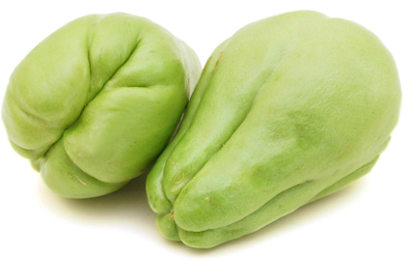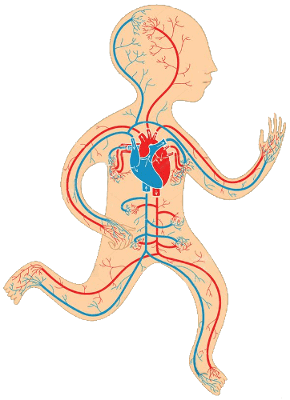
como cozinhá-lo
outras informações

benefícios para a saúde

O CHUCHU REDUZ A PRESSÃO ARTERIAL
O chuchu é utilizado tradicionalmente como planta medicinal contra a hipertensão na medicina popular de diversos países, dentre os quais o México1 e o Brasil2. A atividade hipotensiva do chuchu foi objeto de diferentes estudos que comprovaram tal ação3 4. Embora o mecanismo preciso ainda não seja totalmente claro, pressupõe-se que “a riqueza do chuchu em polifenóis abre diversas possibilidades de análise do efeito benéfico dessas substâncias para a hipertensão4.”
Diagnostica-se hipertensão quando os vasos nos quais o sangue circula se contraem de forma sistemática5. A OMS relacionou a pressão arterial elevada como uma das principais causas de mortalidade prematura evitáveis à escala mundial6. Dentre as causas de hipertensão, deve-se citar o consumo de sal, álcool7, alimentos de origem animal8, sedentarismo e obesidade9.
TEM PROPRIEDADES CARDIOPROTETORAS10
De uma maneira geral, diversos estudos clínicos11 12 sugerem que uma dieta rica em frutas e legumes “fornece proteção significativa contra o desenvolvimento de diversas doenças crônicas, incluindo […] doenças cardiovasculares13“. O chuchu, mais especificamente, seria benéfico à saúde cardiovascular por várias razões: por conter metabólitos que participam ao relaxamento vascular14, por diminuir o nível de colesterol LDL e aumentar o nível de HDL15, além de ser fonte de um ácido essencial (ALA) conhecido por sua atividade cardioprotetora16.
TEM AÇÃO DIURÉTICA
O chuchu tem uma “poderosa ação diurética17“, propriedade reconhecida pela medicina tradicional de diversos países18. É composto por mais de 93% de água, além de conter muito pouco sódio*, é portanto um alimento ideal para aqueles que sofrem de pedra no rim19. Os diuréticos seriam benéficos também para o tratamento da hipertensão20 e de insuficiência cardíaca21.
É FONTE DE
(*)% Valores Diários de referência com base em uma dieta de 2.000 kcal ou 8400 kJ. Seus valores diários podem ser maiores ou menores dependendo de suas necessidades energéticas. Para 100 gramas, chuchu cozido na água, sem sal – SelfNutritionData
1 – Nutritional Evaluation of Sechium Edule GermplasmsCollected from Garo Hills of Meghalaya – North East India – 2015 – Lokesh K. Mishra and Puspita Das
2 – Plantas medicinais utilizadas pela comunidade do bairro dos Tenentes – município de Extrema, MG, Brasil – 2011 – Universidade de Santo Amaro, Faculdade de Biologia, Laboratório de Fitoquímica – Costa, V.P.; Mayworm, M.A.S
3 – The antihypertensive effects of the Jamaican Cho-Cho (Sechium edule). – 2000 – Department of Basic Medical Sciences, Faculty of Medical Sciences, University of the West Indies, Jamaica. – Gordon EA, Guppy LJ, Nelson M
4 – Extracts and Fractions from Edible Roots of Sechium edule (Jacq.) Sw. with Antihypertensive Activity – 2014 – Ciencias Biológicas y de la Salud, División de Ciencias Biológicas y de la Salud, Universidad Autónoma Metropolitana Iztapalapa, México[…] – Galia Lombardo-Earl, Rubén Roman-Ramos[…]
5 – O que é hipertensão – 2017 – Sociedade Brasileira de Hipertensão
6 – Global health risks: mortality and burden of disease attributable to selected major risks – 2009 – World Health Organization
7 – Hipertensão arterial, Wikipédia, a enciclopédia livre. – 2017 – Wikipedia Contributors
8 – Vegetarian diet reduces the risk of hypertension independent of abdominal obesity and inflammation: a prospective study. – 2016 – Institute of Epidemiology and Preventive Medicine, National Taiwan University – Chuang SY, Chiu TH, Lee CY[…]
9 – Obesity-Related Hypertension – 2009 – Hypertension Section, Department of Cardiology, Ochsner Clinic Foundation, New Orleans, LA – Richard N. Re
10 – Mexican medicinal plants used for treatment of cardiovascular diseases. – 1980 – Am. J. Chin. Med. 8:86-95. – Lozoya, X.
11 – Polyphenols: Benefits to the Cardiovascular System in Health and in Aging – 2013 – Northern Ontario School of Medicine, Sudbury, Canada […] – Sandhya Khurana, Krishnan Venkataraman[…]
12 – Intake of vegetables, legumes, and fruit, and risk for all-cause, cardiovascular, and cancer mortality in a European diabetic population. – 2008 – Department of Epidemiology, German Institute of Human Nutrition Potsdam-Rehbruecke, Nuthetal – Nöthlings U, Schulze MB, Weikert C[…]
13 – Plant polyphenols as dietary antioxidants in human health and disease – 2009 – Department of Biochemistry; University of Allahabad; Allahabad, India – Department of Biochemistry; University of Allahabad; Allahabad, India
14 – Vasoactive and antioxidant activities of plants used in Mexican traditional medicine for the treatment of cardiovascular diseases – 2008 – Facultad de Química, Universidad Autónoma de Querétaro, Centro Universitario, 76010 Querétaro, México – Ibarra-Alvarado C, Rojas A, Mendoza S[…]
15 – Cardioprotective activity of fruits of Sechium edule – 2015 – Department of Pharmacology, Calcutta Institute of Pharmaceutical Technology and AHS, Uluberia, West Bengal, India – Sanam Neeraja, Rabindra Debnath and S.M. Firdous
16 – Chemical constituents of Sechium edule(Jacq.) Swartz – 2014 – Chemistry Department, De La Salle University Science & Technology Complex, Laguna, Philippines[…] – Consolacion Y. Ragasa, Kristine Biona and Chien-Chang Shen
17 – The Effect of a Chayotte (Sechium edule) Extracts (Decoct and Macerated) on theLabeling of Blood Elements[…] – 2003 – UERJ, IBRAG, Departamento de Biofísica e Biometria, Rio de Janeiro, RJ – G. Diré, E. Lima, M. Gomes[…]
18 – Edible Medicinal And Non-Medicinal Plants: Volume 2, Fruits – 2012 – Lim T. K.
19 -Hepatoprotective activity studies of herbal formulations. – 2008 – Int J Green Pharm – Kamble MB, Dumbre RK, Rangari VD
20 – Diuretic Treatment of Hypertension – 2011 – Internal Medicine D and Hypertension Unit, The Chaim Sheba Medical Center, Tel-Hashomer, Tel-Aviv University, Tel-Aviv, Israel[…] – Ehud Grossman, Paolo Verdecchia[…]
21 – Diuretic, From Wikipedia, the free encyclopedia – 2017 – Wikipedia Contributors



